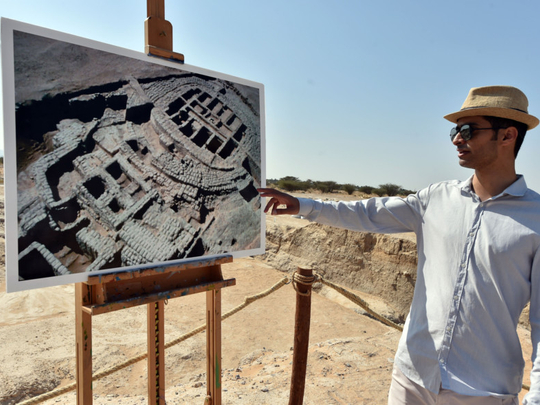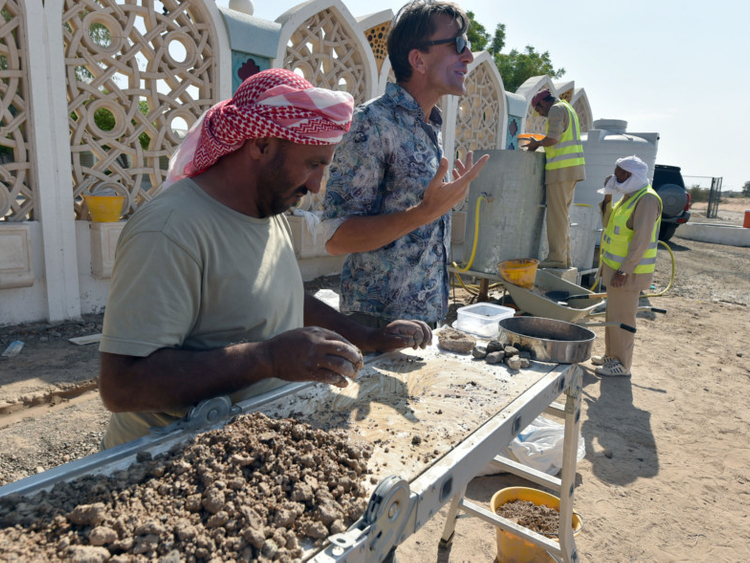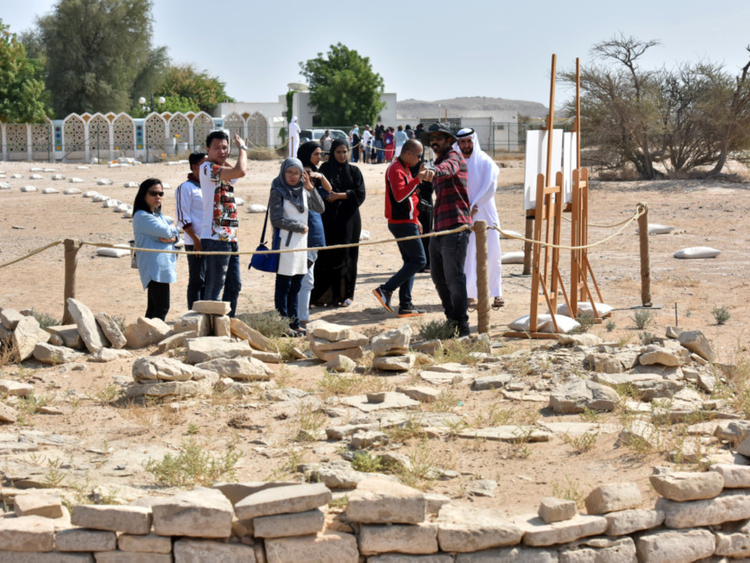
Abu Dhabi: Standing structures, tombs, wells and evidence of agricultural activity point to a thriving settlement in Al Ain dating all the way back to 3000BC.
Designated as a Unesco World Heritage Site, Hili has been one of the main excavation areas for archaeologists in the UAE, with teams of French archaeologists originally exploring the site from the late 1970s until the early 80s, making discoveries that changed several perceptions about the history of this area.
In 2017 the site — Hili 8 — is yet again being explored by both Emirati and European archaeologists as they look to make new discoveries by using new technologies.
“Hili 8 is a unique site, it a settlement that dates back to the Bronze Age period about 3000BC, and going all the way to the Iron Age until 300BC,” said Abdullah Al Kaabi, an Emirati archaeologist who works on the site, during a media tour of the area.
“The settlement has a number of different man-made structures, including tombs, wells, ditches, and small standing structures that could have been homes,” he added.
“What makes Hili 8 more unique is the evidence we have found of crops being cultivated here, we have discovered remains of barley, wheat, and the date palm. This is some of the earliest evidence of agricultural activity in the region and it comes from this site,” he added.
Al Kaabi explained that the latest works being carried out on Hili 8 is meant to discover more remains of agricultural activity, and possibly new and different types than the ones that have already been found.
“We are using what is known as the flotation system. This technology was not available when the site was excavated in 1970s, and so it will help us understand the area in a better way.
“Previously, it was difficult to find the small remains, like plants or seeds, but with the flotation system we can identify whatever small remains are there, which we can then take to the lab and analyse afterwards,” he added.
From the discoveries already made on the site, Al Kaabi said the settlement was a large one with a big community.
“Based on the tombs and the number of bones that were found we could tell that this was really a large community with hundreds of people living here. In one tomb alone more than 500 bones from different people were found,” he said.
According to Al Kaabi, all signs indicated that the settlement was a thriving one, adapting to its environment, and establishing trade with places like Mesopotamia.
“Inside one of the earlier buildings we found a well that was four metres deep, and another that was 9.5 metres deep. This shows how the climate changed and the people getting less rain, which made them have to dig deeper to reach the groundwater level,” he said.
“We also came to know that the settlement was involved in trade with other places, and so we can say with confidence that this was an organised and thriving community,” he added.
Al Kaabi said, being an Emirati, he was glad to work on the ancient settlement site and learning about some of the first people who lived in this area.
“It’s very exciting to learn about the history of our culture and ancestors, and to then be able to show this to other people as well. I think it is important to educate the public about how our ancestors lived, the resources they used, the type of houses they built, and their interactions with other cultures and communities.”














